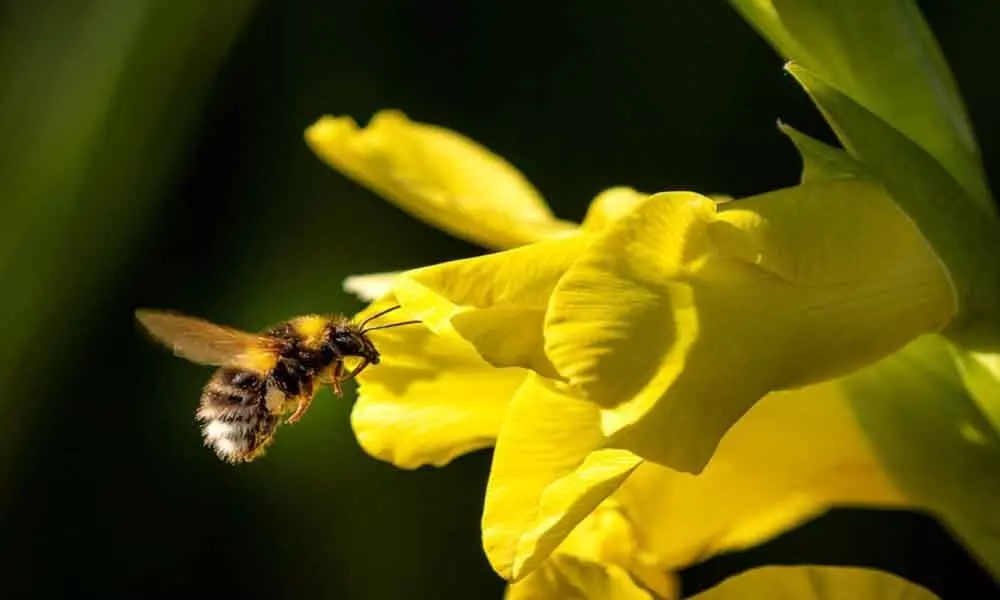Bumblebees shift to the mysterious economy mode when carrying heavy load: Study

Researchers have shown for the first time how bumblebees, which are the heavy-lifters of the insect world, are able to alter their flight behaviour to bring almost their own bodyweight in nectar back to their hives.
Researchers have shown for the first time how bumblebees, which are the heavy-lifters of the insect world, are able to alter their flight behaviour to bring almost their own bodyweight in nectar back to their hives.
According to the study, published in the journal Science Advances, bumblebees have two different ways to cope with increasing loads. In one flight mode, the bees increase flight amplitude, which is how far they flap their wings, and they also flap more frequently, generating greater lift, but consuming more energy, the study noted. The researchers, including those from the University of California (UC) - Davis in the US, said there is also an alternative, subtly different flying mode which allows the bees to carry heavier loads while expending less energy.
While the scientists are not clear yet on what exactly this "economy mode" involves, they believe it is linked to a change in how the wing rotates to reverse direction between strokes. "It turns out to be a behavioral choice they are making in terms of how they support the load," said Stacey Combes, study co-author from UC - Davis.
The findings revealed that when bumblebees are lightly loaded or rested, they are more likely to increase wingbeat frequency but when they are more heavily loaded, they switch to the mysterious economy mode.
In this mode, the scientists said, the bees produce enough force to support the load with only a small increase, or even a decrease, in flapping frequency.
"They can carry 60, 70 or 80 per cent of their body weight flying, which would be a huge load for us just walking around," said Susan Gagliardi, another co-author of the study from UC - Davis. In the study, the scientists measured the energy consumed by bumblebees flying in a specially designed chamber -- an emptied snowglobe, and used high-speed video to examine wing beats and movements.
"We have the bees in a little chamber and we measure the carbon dioxide they produce. They are mostly burning sugar so you can tell directly how much sugar they are using as they are flying," Gagliardi said. The researchers said bumblebees fly very differently compared to an to aircraft. They explained that while air flows smoothly over an aircraft wing or rotor blade, bees move their wings at a high angle to the air, generating vortices that curl round the wing.
Combes and her team said this produces much more lift than smooth airflow, but is unstable since the vortices break down quickly.








